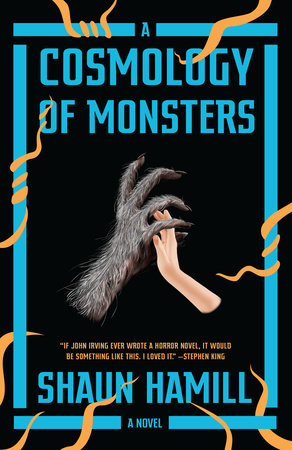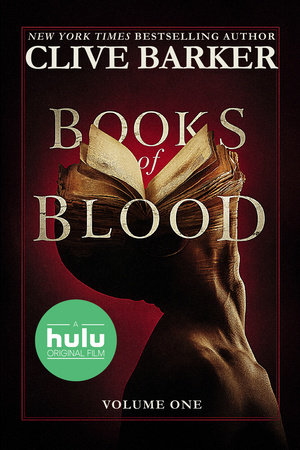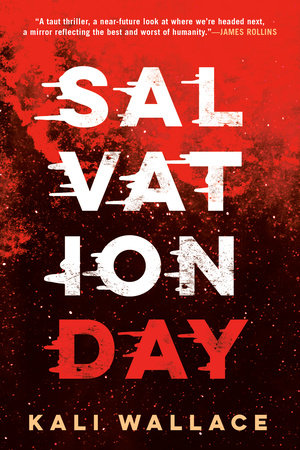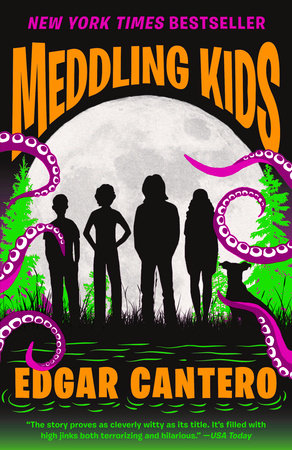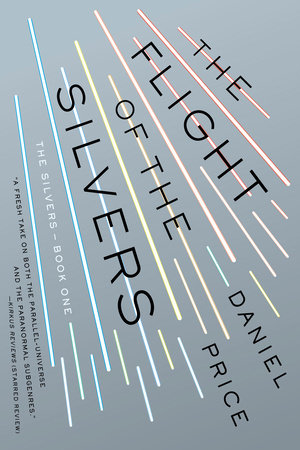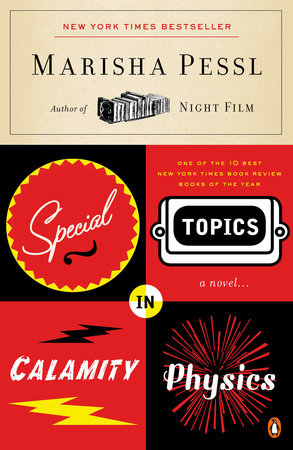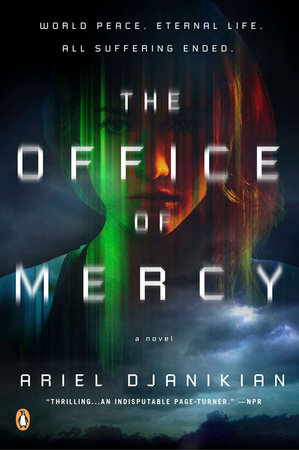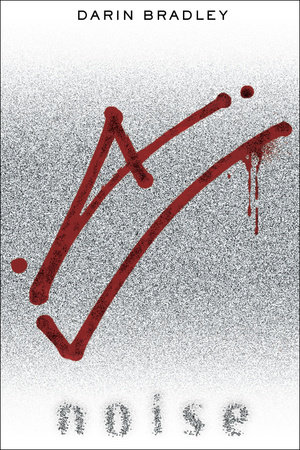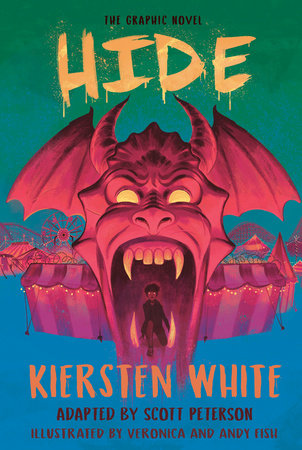Q: Let’s start at the very beginning: what inspired you to write A Cosmology of Monsters?
Shaun Hamill: This novel was born out of the wreckage of a couple of projects. The first was a sprawling tragi-comic saga in the style of John Irving or Meg Wolitzer, about a family operating a youth hostel in Taos New Mexico. The second was a short story about a married couple breaking up as they tour a haunted house attraction. Neither piece quite worked, but one day while I was walking my dog, the two ideas put themselves together and I realized that my epic family business novel should be about a haunted house, not a youth hostel. It would give me a chance to merge my taste for character-driven literary fiction with my love for the darker, more eerie tones of the horror genre. Noah’s voice came to me right away, as did Eunice’s suicide notes and the romance that opens the book. The rest of it came organically, as I followed the story where it led, exploring my characters and their ever-darkening world. I was perpetually surprised by what I found. I would never have been able to plan a book like this, and I hope some of that dark joy of discovery carries over for the reader.
Q: You bring a unique background to your debut novel: you’re a lifelong horror fan, and you also hold an MFA from the Iowa Writers’ Workshop. What was your experience like writing genre fiction at an MFA program known for its literary tradition?
Hamill: Iowa has a reputation for being a pressure cooker of ruthless competition, and also for churning out Raymond Carver devotees who only deal in poe-faced realism. When I was accepted to the Workshop, I bought into both clichés without really speaking to anyone who’d been there. I tried to shut down my genre proclivities, and I struggled with writer’s block for months. Once I got settled in, however, I realized that the current Workshop, under Lan Samantha Chang’s leadership, has become a place that encourages a much wider range of voices. I was in Iowa when I had the lightning bolt moment for Cosmology, and I turned in my early pages for workshop in Sam’s class. Once the project had her blessing, I felt free to pursue it. I won’t say all of my instructors were fond of it, but my classmates were incredibly kind and encouraging.
So I guess in short, it was a lovely experience writing genre in Iowa. I got the guidance I needed to become a better writer, and gained the courage to pursue my own aesthetic.
Q: Cosmology is an origin story for immersion horror experiences (think escape rooms and haunted houses). Tell us about The Wandering Dark – what is it, and how did you dream it up?
Hamill: The Wandering Dark is the haunted house attraction run by the Turner Family in A Cosmology of Monsters, and is one of the book’s central locations. Although the attraction opens in 1989 and is set in the traditional haunted house milieu (old warehouse, individual scare rooms, jump scares, etc.), it features a more recent concept—that of the immersion experience, like an escape room or the slasher sleepaway camps available today.
In the Wandering Dark, visitors are only permitted inside in small groups, and each group is given a single flashlight to find its way through to the other side. The flashlights are the only lighting in the whole building, which creates an ever-present sense of dread. Compounding that dread is the monster (the titular Wandering Dark) that stalks the guests, appearing at random and sometimes capturing guests (although the captured guests are always audience plants).
Once I knew that the family business in my book was going to be a haunted house, it became important to show that the Turners are really good at it, and that Noah has inherited this talent for frightening people. It was also important to come up with something that would frighten me if I had to walk through it—after all, like Shirley Jackson said, “Delight in your fear.” I did my research. I watched documentaries, plundered web forums, listened to podcasts by modern haunters, and polled my braver friends to tell me about the weirdest things they’d ever seen in these attractions. What I came up with—the marriage of the traditional to the modern—felt like a good way to demonstrate the Turners’ innovative ideas, and also made an interesting microcosm of the larger story of the book—a haunted family stalked by a sinister outsider.
Q: Family life and mental health take center stage in Cosmology. What can horror fiction teach us about both? What do you most hope readers take away from these threads of the story?
Hamill: Horror has this wonderful ability to concretize our deepest fears and anxieties, and gives us a chance to face them directly, in ways that real life can’t. Horror doesn’t have to be polite. It can be blunt. Look at the Exorcist, which deals with patriarchal fears of female sexuality in a post-feminism world, but couches those fears in terms of demonic possession that must be removed via agents of the Catholic Church.
Mental illness and family dysfunction have played a big role in my life. My own family went through a pretty dark time right that started when I was in grade school and lasted until after I graduated high school. I wanted to explore life in a broken household, a place where there’s no lack of love but there is a lack of connection: every single person feels isolated, and is struggling with their own demons.
The monsters in this book are emblematic of the Turner family’s issues, but with a couple of key twists on the usual take. Unlike most literary fiction that deals with genre, the monsters exist independently of the characters’ problems. And unlike a lot of genre stories, the Turner family’s problems don’t hinge on whether or not they defeat or succumb to the monsters. The Turners aren’t ill and dysfunctional because there are monsters hunting their family. If the monsters were to disappear, the family issues would remain, and if the family faces their issues, the monsters won’t suddenly vanish.
I guess what horror fiction (or at least this novel) can “teach” is that there are no tidy solutions for these problems. Mental illness and dysfunction aren’t solvable. They’re ongoing and you grapple with them across a lifetime—but that doesn’t mean they’re not worth grappling with.
Q: Cosmology has a strong Lovecraftian element woven throughout. What do you think gives Lovecraft’s work its enduring appeal? And why did you choose to give Lovecraft such a place of prominence in Cosmology?
Hamill: Lovecraft, for all his many failures as a writer (and a human being!) had an incredible knack for evoking “the thing on the doorstep,” a universe of monstrosities that lie just outside the ken of humanity. The way he weaved his stories together—repeating appearances of the Necronomicon, Miskatonic University, et al—gives his work a collective weight and makes it feel more real somehow. There always seems to be more happening off the page than we’ve been shown.
Lovecraft also died when he was only 46. There’s an “unfinished symphony” aspect to his work that seems to invite (and in some cases, demand) reader participation and interpretation. You could fill a library with all of the Lovecraft homages, pastiches, criticisms and rip-offs that have appeared in the last several decades—stories, novels, films, paintings, comic books, video games, role playing games, music, etc. Even though most people haven’t read Lovecraft (and many who try give up early), his creations and his shadow are inescapable in pop culture.
I was always one of those readers who loved the idea of Lovecraft but struggled with his prose. When I started writing Cosmology, though, something in his fiction called out to me and I took the time to read through his collected works. Lovecraft believed that humanity is an insignificant accident in a deep, meaningless universe. Again and again his characters discover this fact, and react to the revelation with horror. I thought it would be interesting to take this cosmic philosophy and apply it to everyday family life. Take for granted that there’s no inherent meaning in the universe. That terrible things happen all the time, for no good reason. Even take it for granted that there might be monsters in the world preying on us. How should we live our day-to-day lives? What still has value?
Q: I was surprised to discover a tender love story at the heart of this terrifying read. Without spoiling anything, what does this love story contribute to Cosmology?
Hamill: This is a book full of love stories—the big one you reference, of course, but also several other familial and romantic relationships (both good and bad) that provide the emotional backbone of the novel. These love stories were a good way for me to explore the questions I mentioned before, about how to live and what has value in a universe without inherent meaning. I guess it’s my answer to Lovecraft—so what if the universe doesn’t care about you? People do. You care about other people. And the way that you handle the people in your life can turn you monstrous or keep you human. Sometimes it does both.
Q: Structurally, Cosmology is a fascinating and wholly immersive read. Can you explain the way you’ve chosen to structure the book? How does its structure reflect its content?
Hamill: I wanted to create a world that a reader could disappear into, filled with characters they’d want to spend time with, and an eerie suburban gothic vibe to cast a shadow over it all. However, I had no real idea how to approach such a big project, how to gracefully move from the 1960s to the 2010s with the style of, say, The Hotel New Hampshire, which seems to handle the passage of time pretty effortlessly. I’ve always been a cinematic, scene-focused writer, so my solution was to break my narrative into discrete sections, each set in a very limited time period, and leading to a crisis point in the Turners’ lives. For most of the book, this takes the form of a different Halloween season, and although Noah remains the narrator throughout, the emotional focus of each section rests with a different member of the family dealing with their own demons (both literal and figurative). Each section is also followed by a mysterious interlude meant to hint at the larger mysteries of the book and to deepen our emotional connection to the characters. In this way, the book can cover a lot of ground relatively quickly, but also (hopefully) keeps the reader a little off-guard and uncomfortable, since the gaps between sections are usually pretty wide, and the characters undergo a lot of change between.
Q: Is it fair to say that horror is having a resurgence in the mainstream? Why, in your opinion, are people gravitating towards phenomena like Stranger Things and the new IT adaptations now?
Hamill: I saw a headline last year on The Telegraph about how horror fiction sales were at a four year high, so I think it’s fair to say that mainstream audiences are paying a little more attention to horror these days. It’s interesting that you mention Stranger Things and the new IT movies, because both are 1980s nostalgia trips. The 1980s are having a moment right now, and horror was huge in the 1980s, when Stephen King and John Carpenter were doing some of their best work, and slasher films were everywhere. There’s a lot of fear and uncertainty in the public consciousness right now, a lot of social upheaval and backlash, and it makes sense that audiences would want to flee back to a time that felt safe and easier to understand, even in the context of a horror story.
But there’s also another piece to horror’s recent resurgence, one not buried in the past, with the fears of straight white men: the last several years have given us a vanguard of new, diverse voices in the horror field, using the form to give voice to traditionally repressed groups and allowing wider audiences to engage in some difficult conversations about race (Jordan Peele’s Get Out and Victor LaValle’s The Ballad of Black Tom), parenthood (Jennifer Kent’s The Babadook), disability and immigration (Guillermo del Toro’s The Shape of Water), women’s autonomy (Carmen Maria Machado’s Her Body and Other Parties), and so on. These are incredibly vital conversations and voices, and I think the strong audience response to these works is very telling about where we are as a nation.
